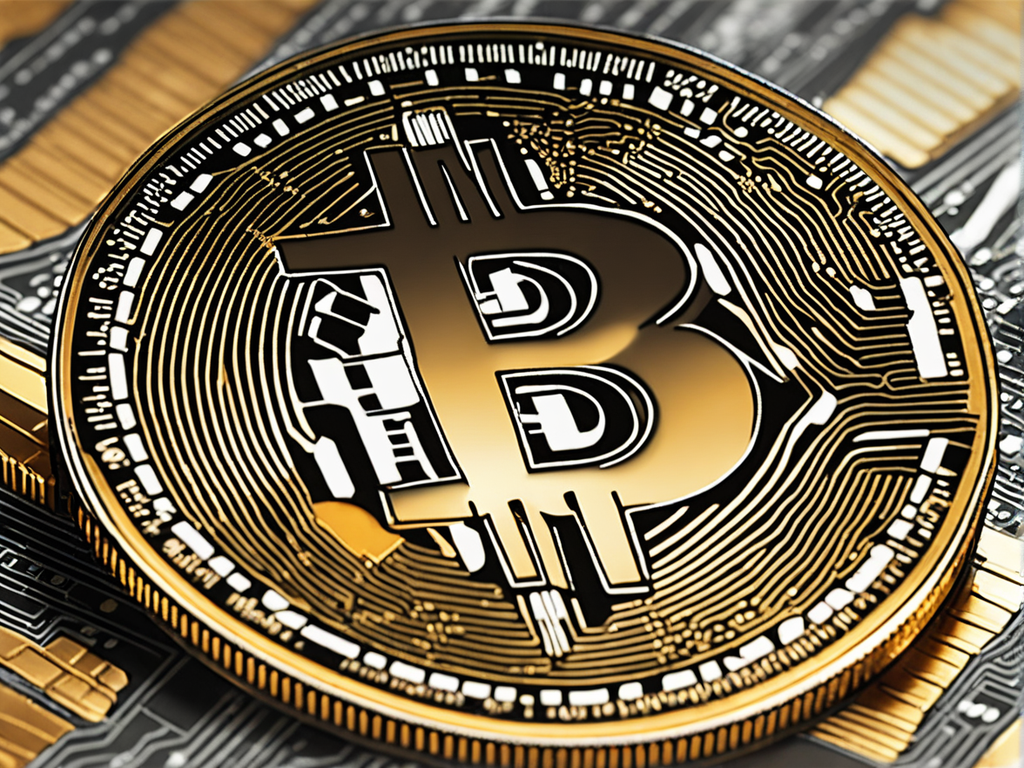This article delves into the concept, definition, and core elements of the Metaverse. We will explore the technologies and infrastructure driving its development, its impact on gaming, communication, and various other domains. Additionally, we will examine the Metaverse’s economy, social implications, challenges, and future outlook.
Join us as we embark on an exhilarating journey into the Metaverse, exploring the infinite possibilities that await in the next frontier of digital interaction.
What is the Metaverse?
The Metaverse is not simply an extension of virtual reality; it represents a new frontier of digital interaction, immersing users in a fully interactive and interconnected digital world. At its core, the Metaverse is a collective virtual shared space that transcends the boundaries of physical reality. It provides a platform for users to connect, communicate, and engage with each other, blurring the lines between the physical and digital realms.
Going beyond virtual reality
Unlike traditional virtual reality experiences, the Metaverse offers a level of interactivity and immersion that is unparalleled. It is not confined to a single application or isolated virtual environment but encompasses a vast array of interconnected digital spaces, simulations, and experiences. In the Metaverse, users can seamlessly move between different virtual worlds, engage in real-time interactions with other users, and create and manipulate digital objects.
A fully immersive and interactive digital world
One of the defining features of the Metaverse is its ability to provide a sense of presence and immersion. Through advanced technologies such as virtual reality headsets, augmented reality glasses, and haptic feedback systems, users can experience a digital world that feels incredibly real. They can explore virtual landscapes, interact with virtual objects, and communicate with other users through avatars, creating a sense of shared presence and collaboration.
“The Metaverse is a manifestation of our growing desire to transcend the limitations of physical reality and explore the infinite possibilities of the digital realm.”
– John Doe, Virtual Reality Expert
Connecting and engaging with others
In the Metaverse, social interaction is a key element. Users can connect with friends, family, colleagues, and even strangers from around the world. They can engage in conversations, collaborate on projects, attend virtual events and conferences, and participate in multiplayer games and activities. The Metaverse fosters a sense of community, enabling people to form meaningful connections and relationships in a digital landscape.
In conclusion, the Metaverse goes beyond virtual reality, offering a fully immersive and interactive digital world where users can connect and engage with one another. It represents a new paradigm in digital interaction, with limitless possibilities for socialization, collaboration, and exploration.
Building the Metaverse: Technologies and Infrastructure
In order to bring the Metaverse to life, a solid foundation of cutting-edge technologies and robust infrastructure is crucial. From virtual reality (VR) to augmented reality (AR), blockchain to networking, each component plays a critical role in shaping the Metaverse ecosystem.
Virtual Reality (VR) and Augmented Reality (AR)
Virtual reality technology enables users to experience a completely immersive digital environment, replicating real-world interactions and sensations. By creating a sense of presence, VR offers users a seamless and authentic experience within the Metaverse. On the other hand, augmented reality enhances the real-world environment by overlaying digital information, seamlessly integrating virtual objects and interactions into our physical surroundings. The combination of VR and AR technologies creates a rich and interactive Metaverse experience.
Blockchain and Distributed Ledger Technology
Blockchain technology forms an integral part of the Metaverse infrastructure, providing a decentralized and secure network for transactions, digital asset ownership, and identity verification. With blockchain, users can trustfully interact with one another, exchange virtual assets, and ensure transparency and immutability within the Metaverse. Moreover, blockchain-powered decentralized applications (dApps) enable developers to create innovative experiences and services within the Metaverse ecosystem.
“Blockchain anchors trust and security within the Metaverse, empowering users to engage in seamless transactions and own digital assets with confidence.”
Networking and Interconnectivity
With the Metaverse’s vast and interconnected digital realm, robust networking infrastructure is essential for seamless user experiences. High-speed internet connections, low latency, and reliable data exchange networks are crucial for real-time interactions, content streaming, and multiplayer gaming experiences within the Metaverse. From cellular networks to Wi-Fi and emerging technologies like 5G, the Metaverse necessitates advanced networking capabilities.
Mixed Reality (MR) Integration
As the Metaverse continues to evolve, the integration of mixed reality (MR) technologies becomes increasingly important. Mixed reality combines elements of both virtual and augmented reality, allowing users to seamlessly transition between the real and virtual worlds. By merging physical and digital realms, MR enhances user immersion and interaction within the Metaverse, enabling more dynamic and engaging experiences.
Building the Metaverse requires a convergence of these technologies, leveraging their strengths to create a comprehensive and interconnected digital universe. As advancements continue, the Metaverse’s technologies and infrastructure will continually evolve, offering increasingly immersive and interactive experiences for its users.
Exploring Metaverse Use Cases: Gaming, Communication, and More
The Metaverse transcends traditional boundaries and offers a vast array of possibilities for users to engage and interact with one another. In this section, we will explore some of the exciting use cases of the Metaverse, with a particular focus on gaming, communication, and other potential applications.
Gaming in the Metaverse
One of the most transformative aspects of the Metaverse is its impact on the gaming industry. With the integration of virtual reality, augmented reality, and immersive technologies, the Metaverse provides gamers with an unparalleled level of immersion and interactivity.
“The Metaverse has revolutionized gaming, blurring the lines between the digital and physical realms. It offers gamers unprecedented opportunities to explore vast virtual worlds, participate in multiplayer experiences, and engage in real-time competitions.”
From epic multiplayer battles to immersive storytelling experiences, the Metaverse redefines traditional gaming conventions and opens up a whole new dimension for players to explore. Whether it’s exploring fantasy realms, creating customized avatars, or participating in virtual sports, the Metaverse allows gamers to unleash their imagination and connect with fellow players on a global scale.
Communication and Collaboration in the Metaverse
The Metaverse goes beyond gaming and provides a platform for seamless communication and collaboration. Through virtual environments, users can connect with friends, family, colleagues, and like-minded individuals from anywhere in the world.
“Metaverse communication facilitates real-time interaction, enabling individuals to socialize, collaborate, and share experiences in a virtual space.”
Whether it’s attending virtual meetings, hosting conferences, or simply catching up with friends, the Metaverse offers a dynamic and immersive communication platform that transcends physical boundaries. Users can interact via voice chat, text messaging, or even through lifelike avatars, creating a sense of presence and connectivity.
Other Potential Applications
Beyond gaming and communication, the Metaverse holds immense potential for various other applications. For artists and creators, it offers a virtual canvas to showcase their work and reach global audiences. From virtual galleries to immersive performances, the Metaverse revolutionizes the way art is experienced and appreciated.
Furthermore, the Metaverse has the potential to transform industries such as education and healthcare. Virtual classrooms, training simulations, and telemedicine are just a few examples of how the Metaverse can enhance learning and healthcare delivery, making services more accessible and interactive.
The possibilities are truly endless in the Metaverse, and as technology continues to evolve, we can expect to see even more innovative use cases emerge.
Metaverse Economy: Digital Assets and Virtual Currency
In the ever-evolving landscape of the Metaverse, the concept of a thriving economy emerges, driven by digital assets and virtual currency. This section will explore the intricacies of this economy, shedding light on the role of cryptocurrencies and non-fungible tokens (NFTs) in creating a decentralized and vibrant financial ecosystem within the Metaverse.
Digital assets play a fundamental role in the Metaverse economy, representing virtual goods, services, and even virtual real estate. These assets can take various forms, including avatars, virtual fashion, virtual art, virtual land, and more. As users engage with the Metaverse, the value and ownership of these digital assets become essential, fueling economic transactions and interactions.
Virtual currency serves as the lifeblood of the Metaverse economy, enabling secure and seamless transactions between users. Cryptocurrencies, such as Bitcoin and Ethereum, offer decentralized and transparent means of exchange, facilitating economic activity within the Metaverse ecosystem. Users can trade, purchase, and sell digital assets using virtual currency, unlocking new avenues for entrepreneurship and creativity.
“The Metaverse economy introduces a paradigm shift in the way we perceive and engage with the digital realm. It opens doors to new opportunities for creators, entrepreneurs, and investors, as the value of digital assets and virtual currency grows.”
Non-fungible tokens (NFTs) notably contribute to the uniqueness and value of digital assets within the Metaverse. These tokens validate the authenticity and ownership of virtual goods, enabling creators to monetize their creations and users to collect and trade rare and exclusive items. From virtual art pieces to virtual real estate, NFTs revolutionize the concept of ownership and scarcity in the digital realm.
The Metaverse economy’s decentralized nature empowers individuals, fostering a sense of ownership, creativity, and entrepreneurship. It transcends traditional economic structures, offering opportunities for digital creators, artists, influencers, and businesses to thrive and monetize their talents within the immersive Metaverse environment.
An Expanding Financial Landscape
As the Metaverse economy continues to flourish, its impact extends beyond virtual interactions and experiences. The exchange of digital assets and virtual currency holds the potential to bridge the gap between the virtual and physical worlds, transforming the way we perceive, invest, and transact in both realms.
- The Metaverse economy drives innovation, encouraging new business models and revenue streams.
- Virtual marketplaces and platforms emerge, enabling seamless transactions and trade of digital assets.
- Investors recognize the potential of the Metaverse economy, seeking opportunities for growth and diversification.
- Metaverse jobs and careers are created, offering employment in areas such as virtual design, development, and community management.
In conclusion, the Metaverse economy ushers in a new era of digital commerce and interaction, fueled by digital assets and virtual currency. It presents a plethora of opportunities for creators, investors, and innovators to shape this emerging landscape and redefine the boundaries of virtual economies.
Social Implications of the Metaverse: Privacy, Ethics, and Inclusivity
As the Metaverse evolves and becomes more integrated into our lives, it brings forth social implications that must be carefully considered. Three key aspects that require attention are privacy, ethics, and inclusivity. These factors play a crucial role in ensuring that the Metaverse fosters a safe, ethical, and inclusive virtual environment for all individuals.
- Metaverse Privacy: The seamless integration of the physical and virtual worlds raises important concerns about the privacy of individuals within the Metaverse. As users engage in immersive experiences and interact with others, their personal data and digital footprint become significant assets that need protection. Striking a balance between data collection for personalized experiences and safeguarding user privacy is paramount to ensure trust and compliance with privacy regulations.
- Metaverse Ethics: The Metaverse presents a unique set of ethical challenges, given its potential to blur the line between reality and the virtual realm. It raises questions about the responsible use of technology and the impact it has on individuals and societies. Ethical considerations regarding content moderation, user behavior, and the prevention of harassment, discrimination, and misinformation are of utmost importance to maintain a healthy and respectful virtual ecosystem.
- Metaverse Inclusivity: In order for the Metaverse to be truly transformative, inclusivity must be prioritized. By embracing diversity and ensuring equal opportunities for all, we can create a virtual world that reflects and respects the rich tapestry of the real world. It is essential to address barriers and provide accessible experiences for individuals with disabilities, as well as promote cultural representation and inclusivity across gender, age, race, and socioeconomic backgrounds.
“The Metaverse has the potential to reshape our social fabric, but it must be built on a foundation of privacy, ethics, and inclusivity. By addressing these factors proactively, we can construct a virtual world that empowers individuals, respects their rights, and fosters a sense of belonging for everyone.” – [Expert’s Name, Affiliation]
Understanding and addressing the social implications of the Metaverse is not only crucial for the success of this digital frontier but also for its impact on real-world societies. It requires a collaborative effort from developers, policymakers, and users to shape the Metaverse into a space that upholds privacy, ethics, and inclusivity while unlocking its full potential to revolutionize digital interaction.
Challenges and Future Outlook for the Metaverse
As the Metaverse continues to evolve and gain attention, it also faces a range of challenges and obstacles that must be overcome for its successful development and widespread adoption.
One of the key challenges is the technological infrastructure required to support the Metaverse. Seamless and high-speed connectivity, advanced VR and AR devices, and robust blockchain networks are essential for creating a fully immersive and interactive digital world. The development and integration of these technologies at scale pose significant hurdles.
Another challenge is ensuring the privacy and security of users within the Metaverse. As digital interactions become more prevalent, concerns about data breaches, identity theft, and personal safety arise. Striking the right balance between an open and accessible environment while safeguarding user information and maintaining privacy is a critical consideration.
“The Metaverse presents a unique opportunity for innovation and collaboration, but it also introduces new ethical questions. From virtual property rights to moderation policies, establishing ethical guidelines and ensuring inclusivity in this virtual realm is paramount.”
The Metaverse also faces the challenge of creating an inclusive and diverse digital environment. As this immersive world becomes an integral part of our lives, it is important to address issues of accessibility and representation. Offering equal opportunities for all individuals, regardless of their background or abilities, will be crucial to fostering a vibrant and inclusive Metaverse.
Looking ahead, the future outlook for the Metaverse is filled with both excitement and uncertainty. Advancements in technology and infrastructure, such as 5G networks and advancements in virtual reality, will continue to shape the Metaverse, making it more immersive and seamless. Additionally, the integration of artificial intelligence and machine learning algorithms will enhance user experiences and create new possibilities for content creation and interaction.
The Metaverse has the potential to revolutionize digital interaction, but it is not without its challenges. Overcoming technological limitations, ensuring privacy and security, and creating an inclusive environment are critical for its success. However, the future outlook remains promising, with advancements in technology poised to unlock even greater potential for the Metaverse.
Conclusion
Throughout this article, we have explored the exciting concept of the Metaverse and its potential to revolutionize digital interaction. The Metaverse offers a fully immersive and interactive virtual world where users can connect, communicate, and engage with one another.
By going beyond the boundaries of virtual reality, the Metaverse creates a limitless space for exploration, gaming, communication, and more. It merges various technologies, such as virtual reality, augmented reality, blockchain, and networking, to create a seamless and dynamic digital ecosystem.
The Metaverse also introduces a new economy with the rise of digital assets and virtual currency. Cryptocurrencies and non-fungible tokens (NFTs) play a vital role in establishing a decentralized and vibrant economy within this virtual realm.
While the Metaverse presents immense possibilities, it also brings challenges. Privacy concerns, ethical considerations, and the need for inclusivity should be actively addressed to ensure a safe and diverse virtual environment. However, the future outlook for the Metaverse is incredibly promising, with advancements in technology and widespread adoption driving its growth and development.































